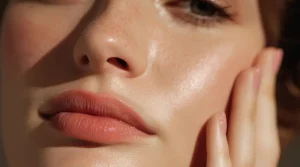If you’re a skincare junkie, you’ve probably heard the buzz about “skin cycling” taking over social media lately. This new skincare method is being touted as a way to get all the benefits of active ingredients while avoiding irritation, dryness, and damage. Here’s everything you need to know about skin cycling and how to get started.
Bergen County Medical Spa, our dedicated team provides exceptional, personalized care using the latest techniques. Book your appointment today to experience our commitment to helping you achieve your desired results and unveil your most radiant self.
What is Skin Cycling?
Skin cycling is a strategic skin care method that involves alternating the use of active ingredients like exfoliants and retinoids with nourishing, hydrating “recovery” nights.
The basis behind skin cycling is that while ingredients like AHAs, BHAs, and retinoids are incredibly effective for things like boosting cell turnover, fading hyperpigmentation, and smoothing texture – they can also be irritating and disruptive to the skin barrier if used too frequently or aggressively.
By cycling through these powerful actives on targeted nights and then allowing time for the skin to reset and repair itself, you get the benefits while mitigating potential downsides like dryness, peeling, redness, and inflammation.
What are the benefits of Skin Cycling:
Minimizes irritation and over-exfoliation By cycling through exfoliating acids and retinoids instead of using them daily, you avoid stripping or damaging your skin’s protective barrier. The recovery nights allow skin to repair itself.
Enhances penetration of active ingredients When you exfoliate one night, it helps clear away dead skin cells so retinoids and other actives can better absorb on the following night.
Prevents dehydration and dryness The recovery nights focus on replenishing moisture and nutrients, counteracting any potential dryness or dehydration caused by the active nights.
Improves efficacy of products Separating out the use of powerful ingredients may actually boost their effectiveness since your skin isn’t becoming overloaded or resistant.
Customizable for your skin type You can adjust the frequency of active nights based on how sensitive or resilient your skin is. Those with very reactive skin may only exfoliate every other week.
Gives visible results with less irritation Many skin cycling fans report smoother texture, fewer breakouts, and a more even, radiant complexion tone without redness or excessive peeling.
Prevents skin from getting used to products By rotating formulas, skin doesn’t plateau or become resistant to the effects of your regimen.
The recovery nights are key to letting skin reset while still targeting concerns on an ongoing basis through the cycling method.
The typical skin cycling routine involves this 4-night cycle:
Night 1: Exfoliation Night – Use chemical exfoliants like AHAs (glycolic acid) or BHAs (salicylic acid) to slough off dead skin cells.
Night 2: Retinoid Night – Apply retinol or other retinoid products to boost collagen and speed cell turnover.
Night 3 & 4: Recovery Nights – Take a break from actives and focus on nourishing, hydrating products to allow your skin to recover.
Then, you simply repeat the 4 night cycle starting over with the exfoliation night.
The Benefits of Skin Cycling
The core benefit of skin cycling is that it allows you to take advantage of powerful active ingredients without overwhelming or damaging your skin. By separating out the use of exfoliators and retinoids, you avoid irritation and overexfoliation.
And the recovery nights give your skin a chance to reset and repair its moisture barrier after using those heavy-hitting actives. Many report improvements in skin texture, tone, and a more radiant complexion after skin cycling for several weeks.
Are there any down sides of skin cycling?
While skin cycling has become a popular trend, there are some potential cons or downsides to be aware of:
Complexity Remembering and sticking to the 4-night cycle routine can be difficult, especially when first starting out. It requires more planning compared to a basic daily routine.
Potential for Error Using the wrong combination of actives on the exfoliation or retinoid nights could lead to irritation, dryness, or damage if you’re not careful.
May Not Suit All Skin Types
Those with very sensitive skin may still find skin cycling too irritating, despite the recovery nights. The actives could be too potent.
Results Take Time As with any new routine, it can take 6-8 weeks or more to see real benefits from skin cycling as your skin acclimates.
Possible Product Wastage If your skin can’t tolerate certain acids or retinoids in the cycling routine, you may end up not using up those products.
Not For Severe Concerns Skin cycling may not be aggressive enough to treat severe acne, melasma, or other stubborn skin conditions.
Easy to Over-Exfoliate If you get carried away on the exfoliation nights, using too many or too strong of acids, you could strip your skin’s barrier.
So while skin cycling has its benefits, it requires some patience, planning, and getting the right balance of actives for your skin’s needs. Pay close attention to how your skin reacts.
How to Get Started
Before trying skin cycling yourself, take stock of your current skincare routine and the actives you use. You may need to adjust the frequency if you’re already using strong leave-on exfoliants or retinoids nightly.
Start slow, listening to your skin. If you notice any excessive dryness, irritation or peeling, take a break or scale back on the active nights temporarily. It may also be helpful to only introduce one active at a time.
With some trial and error, skin cycling could be the perfect solution to getting your glow on with actives – without the downsides! Let us know if you decide to try this trend.






